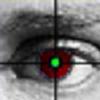THE HORSE CREEK PETROGLYPH OF WEST VIRGINIA (excerpts)

The Horse Creek Ogam inscription was first published in the March 1983 issue of Wonderful West Virginia. The transliteration from the Ogam script to our characters was done by Dr. Barry Fell, professor emeritus from Harvard University, a difficult job well done. He also made an attempt at translation, assuming that the writing was in the Gaelic language, which it was not. The result of this effort was published in the same article but was severely criticized by a number of academics.
This long inscription was signed with "L" which could be an abbreviation for laguntxo (your dear friend), lagun (comrade), lagunarte (group of friends) etc. and was used to end a letter. The word "ama" is mentioned twice in the text, which may mean: mother, priestess or clan mother. It is suggested that the author of this inscription was a Gnostic Christian monk, who was trained in Ogam writing in Irish tradition, and that the ama mentioned referred to the head of the matrilineally organized clan. The symbol which Dr. Fell interprets as the Greek letter "omega" is probably a sketch of the ground plan of the wooden fence, while his "alpha" character may illustrate the A-frame type of construction used to build the bison fence. Concrete evidence of these people has been found in ancient graves which contained crucifixes and pendants with crosses, discussed by archaeologist R.L.Pyle in his book: All That Remains (p53-57). Based on archaeological information and the type of Ogam used, I estimate the date of the inscription to be between 600 and 700 A.D.
It appears from the description of St. Brendan's travels in the Navigatio that the early Irish evangelists, who were Gnostic Christians (centered in Alexandria), were experienced ocean sailors and had no problems maintaining contact with their brethern across the Atlantic. This changed when Roman Catholic Christians (based in Rome), being the landlubber variety, took control in Ireland and left the colonies in America to fend for themselves. Judging by the many megalithic stone structures left by these people in New Hampshire, Pennsylvania, Vermont, New York, Massachusetts, Virginia etc. (Boland and Fell) it is well possible that this colonization effort started centuries earlier. Several centuries later, early American settlers were Robert Pyle mentions that in the Saga of Eric the Red the Norsemen saw men dressed in white robes in what appeared to be an Irish ecclesiastical procession.astonished to see many native Indians with fair skin and blue eyes (Pyle p66). These people were quickly absorbed by the new wave of immigrants and are even today proudly remembered as ancesters of some of the "earliest" American families.
The name "Brendan" is of interest. It derives from "brenda-an": barrenda (to spy, to explore) and anai (religious brother, monk) i.e. exploring monk. It is now desirable that the other East Coast Ogam inscriptions are deciphered. I have no doubt that they are all written in the same language. Some will be difficult because too many vowels were removed from them, which makes accurate translation a real challenge but none are impossible. The Basque language is very logically, almost mathematically, arranged and these problematical Ogam inscriptions may lend themselves to computer decoding. A whole new chapter in the history of North America awaits to be written.
© Edo Nyland 1996
edonon@islandnet.com








































